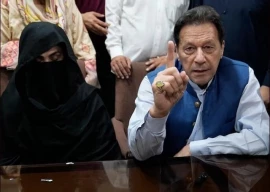
Over the last 30 days, around 50,000 government employees have visited over 30 million homes to note down the number of people living in each of them.
This house listing operation, which ended on May 5, was essentially a dry run for the main census operation that will take place in September, statistics division secretary Asif Bajwa told The Express Tribune.
During the main operation, enumerators will not only count individuals but also demand proof of identity of all adults and record basic information. “Once we have an idea of how many census blocks there are and the approximate number of people living in each, we can plan for the logistics of the main operation,” Bajwa explained.
Counting 180 million people is bound to be difficult but the fact that the exercise is happening after 13 years poses its own set of problems.
What’s in a ‘structure’?
Originally scheduled to be completed in 15 days, starting April 5, the house-listing operation was first extended on April 19 and yet again on April 25.
Once enumerators ventured into the field, particularly in urban centres, they were struck by a semantic problem, said a senior official involved in the census. Does a building with 15 apartments classify as a single ‘structure’ the same way a one-story house in a rural area does? If not, then the number of census blocks, each comprising 200 to 250 houses, initially estimated to be slightly over 100,000, would rise exponentially, given that high-rise apartment blocks in urban areas have tens of ‘houses’.
What followed were alterations in house-listing forms and moving the entire government machinery to ensure that enumerators across the country receive the updated version within two days, Bajwa explained.
Lack of awareness
The house-listing operation gained prominence in Karachi not through a media campaign but after a reported incident of target killing, allegedly involving enumerators. Later reports contradicted the account and claimed the people targeted were political workers, ‘assisting’ the census staff.
Admittedly, the government spent little on increasing public awareness about the importance of census, said a senior official in the statistics division.
There was hardly any mass media campaign, especially when compared to the 1998 census whose jingle is still recognisable 13 years later.
Undercounting, overcounting
Reports of dubious enumerators who failed to provide official identity, data being recorded on photocopied forms and use of pencils in recording information added to public suspicion that political groups were exploiting the exercise.
Not surprisingly, most complaints have come from Karachi where different ethnic and linguistic groups wrestle to prove their numerical strength. Simultaneously, nationalist parties and minorities have voiced concerns that they are being under-counted.
“Not only does having a larger population imply greater representation politically, it is also a bargaining chip for the allocation of fiscal resources,” the official explained.
However, he said, inflating numbers in the house-listing operation will amount to little as in the actual counting: all adults have to prove their identity using computerised national identity cards.
Limits of census gatherers
Census data will form the basis of public policy for the next decade and the importance of not manipulating it for personal ends cannot be emphasised enough.
“The data will be as good as those providing it want it to be,” explained Bajwa. “If someone claims they have eight children, there is no way to verify that because there is no mandatory proof of children’s identity required for the census.”
With four months left, one wonders if the government plans to ensure that the foundation of the next ten years of state-building are not corrupted by ethnic, linguistic and political insecurities.
Published in The Express Tribune, May 9th, 2011.



1731655243-0/BeFunky-collage-(61)1731655243-0-165x106.webp)

1731666526-0/Express-Tribune-(9)1731666526-0-270x192.webp)
1731668520-0/Express-Tribune-(11)1731668520-0-270x192.webp)



1731656720-0/Copy-of-Untitled-(44)1731656720-0-270x192.webp)






COMMENTS
Comments are moderated and generally will be posted if they are on-topic and not abusive.
For more information, please see our Comments FAQ